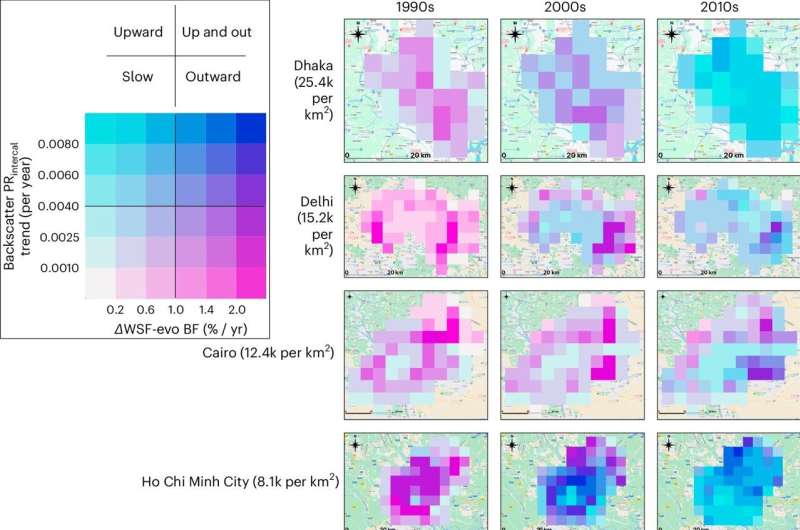August 6, 2024 report
This article has been reviewed according to Science X's editorial process and policies. Editors have highlighted the following attributes while ensuring the content's credibility:
fact-checked
peer-reviewed publication
trusted source
proofread
Satellite study shows cities across the world growing up more than out

A multi-institutional team of Earth scientists, environmental engineers and geomaticists has found via satellite study that modern cities around the world have been growing upward more than outward. In their research, published in the journal Nature Cities, the group studied two types of satellite data for more than 1,500 cities globally.
Over the past several decades, large numbers of people have been moving from rural areas to cities. Projections suggest that by 2030, 60% of all people on Earth will live in a city. So more research is being conducted to provide city planners with data to plan for this scenario.
Prior research has also shown that cities typically get their start as towns that grow larger as new buildings are erected, taking up more ground space, expanding their boundaries. In modern times, humans have learned how to erect buildings that are taller than their predecessors, allowing upward growth rather than outward.
In this new effort, the research team investigated the ways modern cities have been growing. To that end, they obtained two types of satellite data for 1,550 cities around the world from the 1990s to the 2010s.
One type showed the footprint of a city, allowing its size to be measured as a two-dimensional space. The other type, based on microwaves, allowed for the measurement of city growth in three dimensions, thereby accounting for upward growth via the erection of skyscrapers.
The research team found that over the period studied, that city growth was aligned with economic development, as was expected. They also found that most of the cities they looked at underwent a transition from outward growth, to upward—the net result was more upward growth than outward, on average.
The researchers noted that there were exceptions to the average—some cities in Africa, China and Southeast Asia continued to grow outward at a faster pace than upward. They suggest their findings could be used by urban planners when making future estimations regarding resource allocation and distribution.
More information: Steve Frolking et al, Global urban structural growth shows a profound shift from spreading out to building up, Nature Cities (2024). DOI: 10.1038/s44284-024-00100-1
Journal information: Nature Cities
© 2024 Science X Network




















